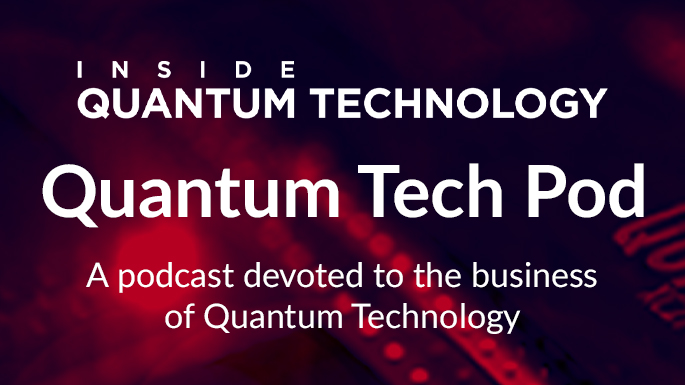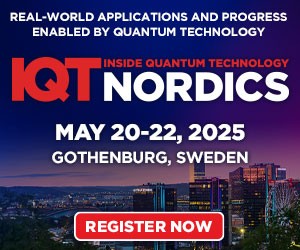Open Source Quantum Computers

In Marvel’s X-Men franchise, Charles Xavier, aka “Professor X,” operates the Xavier School for Gifted Youngsters. He uses a device called Cerebro, shown above, to find superpowered mutants around the world and then bring them to this safe haven, this mutant community. Schools, of course, transfer knowledge. They have curricula. They have projects.
UK-based OpenQuantum is likewise operating a school of sorts, albeit without the brick-and-mortar building and the superpowered mutants. The “curriculum,” following the “common ground” model, can be likened to a “Linux kernel” for neutral atom quantum computers. Everyone in the community collaborates on an open source control software that bridges applications and hardware, functioning as a Linux-like operating system for these computers. Knowledge is transferred, like an actual school, and each customer’s initial two-year project involves building their own neutral atom quantum computer with commercial off-the-shelf hardware components and this open source control software.
Is it a coincidence that OpenQuantum’s Simon Muskett looks a bit like Patrick Stewart? Maybe. Maybe not. While we’re at it, is it also a coincidence that the neutral atom space has something called a Magneto Optical Trap?
X-Men franchise
Like startups that spin out of universities, there are quite a few teams that have spun out of the Xavier School. The most notable team is the X-Men, but the list also includes New Mutants, Generation X, X-Force, X-Factor, Excalibur, Alpha Flight, Hellions, Marauders, and X-Statix.
In a similar fashion, a plethora of Linux distributions have emerged that are based on the Linux kernel. These distributions bundle the kernel with applications and utilities, effectively customizing each distribution for various tasks. For quantum computing, OpenQuantum customers are likewise free to modify and extend the control software, effectively creating a new distribution of it.
Superhero teams
The X-teams don’t always operate alone, nor do they only interoperate with each other. They also have crossover events with other Marvel Universe teams, including the Avengers, Fantastic Four, Guardians of the Galaxy, and others.
In a similar fashion, quantum computers crossover with Big Tech, including high-performance computing (HPC), artificial intelligence (AI), and machine learning (ML). And let’s not forget that quantum computing technologies can branch out into quantum networks and quantum sensors.
Superpowers
OpenQuantum’s approach, though sadly not granting superpowers, nonetheless offers several advantages over other approaches. First, like a school with books, the hardware components are ready-to-go. There is no 12-24 month lead time to get these components, thus accelerating each project. Second, the control software is a global collaboration among multiple groups that are working on the same platform. Third, this initiative isn’t restricted to collective innovation and allows individual innovation, as well. And, finally, there is a significant cost savings versus buying a proprietary system as there is no closed source license at its core. There is a license, but it meets the OSI definition of “open source” by making the product free to use, distribute, sell, or modify.
From a quantum community standpoint, having complete systems with standardized components, species, and control software repeated in multiple jurisdictions and speaking the same language accelerates the whole industry. This approach puts the building blocks in place to truly accelerate the widespread use of quantum computers.
And from a global community standpoint, knowledge gets transferred to local talent. This includes skills transferable to other fields. Local infrastructure gets a boost and progress is greatly accelerated, especially in the developing world. OpenQuantum not only removes barriers to quantum computer ownership, but can also kickstart entire ecosystems around homegrown devices.
OpenQuantum also assists with feasibility studies and cost-benefit analyses.
Conclusion
A customer can expect a two-year project to result in a device suitable for research and educational purposes. The customer and OpenQuantum build out a lab together, which includes an initial system and a 19-inch rack of control electronics. The quantum computer consumes power like a household appliance. Following this initial build, there is an opportunity to scale. A second generation device can aim for higher qubit counts for logical qubit operations, shuttling control for logical qubits, and gate-based computation.
Commercial off-the-shelf hardware with open source software and knowledge transfer promises a competitive qubit count at a heavily-discounted rate and tremendous local benefits wherever in the world you might be. It doesn’t grant you the ability to read and control thoughts like Professor X, but it does offer advantages over simply buying a proprietary closed-source quantum computer.
Image: https://www.deviantart.com/fantasticabstract/art/Prof-X-904464584



















